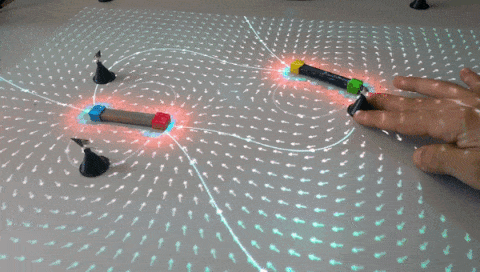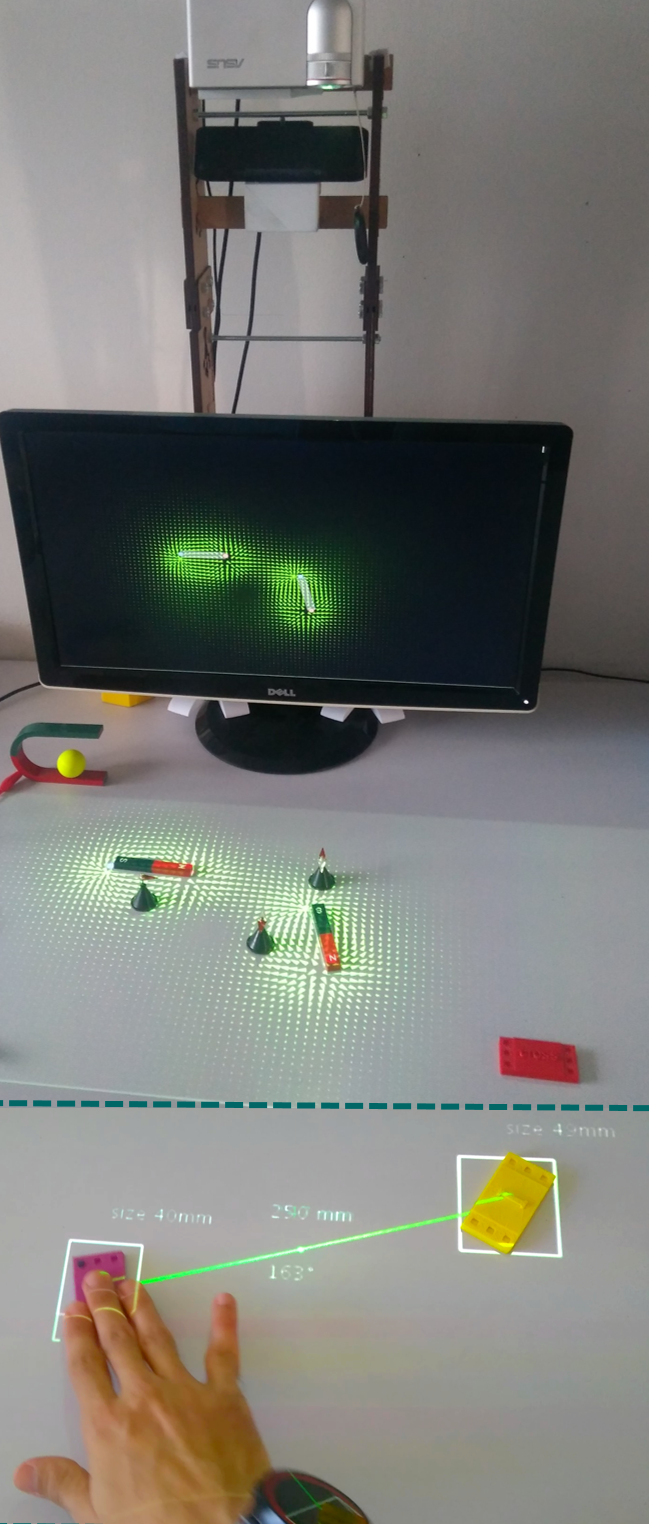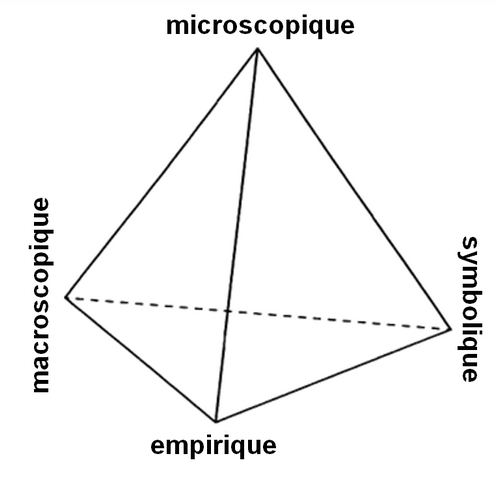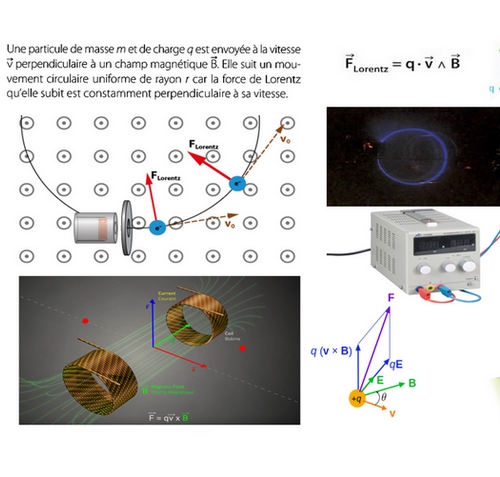Background and motivation
- Researches on conceptual change [1] has shown in a variety of scientific fields that learners come up with alternative frameworks and identifiable preconceptions that resist to instructional remediation.
- Academic students score low marks in conceptual diagnostic tests of electromagnetism. Even studens who obtain the best marks at final exams show erroneus understanding of basic concepts [2].
- Students confuse mechanisms involved at a microscopic level with their sensitive experience at macroscopic level, routinely use definitions and mathematics formulas without conceptual understanding[3].

Challenge: Make meaningful connections between abstraction and sensitive experiences, build up mental models as close as possible to institutionalised knowledge in order to interpret natural phenomena.
Device
Design Principles

Design Principles
- Authentic and natural interaction
Manipulate authentic materials (magnets, compas needles, circuits, matters). We can play with true macroscopic phenomena
- Multiple representations
Deape Learn allows us to switch from one type of representation to another (vector field, intensity map, field lines, formula) to facilitate knowledge building.
- Transparent interface
Minimal interface and natural interactions tend to extrinsic reduce cognitive load. Minimal interface allow students to forget the technical device and focus on learning contents.
- Physics simulation
We interact with real phenomena, Deape Learn doesn't replace it but explain it through rich and interactive multiple visualisations
Research paradigms

Augmented reality [4]
Enactive interface allowing spatial, temporal and semantic superimposition of multiple representations of a same physic phenomena.
/!\ Not only a educational guidance principle but a more complexe interaction between internal (mental) and external (semiotic) representations of the world.

KNOWLEDGE INTEGRATION FRAMEWORK [5]
Educational activities based on learners'conceptual difficulties.
/!\ Deep Learn helps students in distinguishing between abstract ideas or in linking scientific models to authentic contexts
References
- Vosniadou, S. (2013). International handbook of research on conceptual change (2nd ed.). New York: Routledge/Taylor & Francis Group.
- Törnkvist, S. (1993). Confusion by representation: On student’s comprehension of the electric field concept. American Journal of Physics, 61(4), 335.
- Finkelstein, N. (2005). Learning Physics in Context: A study of student learning about electricity and magnetism. Int J Sci Educ, 27(10), 1187–1209.
- Laviole, J., & Hachet, M. (2012). Spatial augmented reality for physical drawing. In Adjunct proceedings of the 25th annual ACM symposium on User interface software and technology - UIST Adjunct Proceedings ’12 (p. 9). New York, New York, USA: ACM Press.
- Bottecchia, S. (2010). Système TAC : Télé-Assistance Collaborative. Réalité augmentée et NTIC au service des opérateurs et des experts dans le cadre d’une tâche de maintenance industrielle supervisée.
- Linn, M. C., & Clark, D. B. (2013). The knowledge integration perspective - connections across research and education. In International handbook of research on conceptual change (2nd ed., pp. 520–538). New York: Routledge/Taylor & Francis Group.
- Ainsworth, S. (2008). The Educational Value of Multiple-representations when Learning Complex Scientific Concepts. In J. K. Gilbert, M. Reiner, & M. Nakhleh (Eds.), Visualization: Theory and Practice in Science Education (pp. 191–208). Dordrecht: Springer Netherlands.
- Suwa, M., & Tversky, B. (2002). External Repre-sentations Contribute to the Dynamic Construction of Ideas. In International Conference on Theory and Application (Vol. 2317, pp. 149–160). Springer Berlin
- Seufert, T. (2003). Supporting coherence formation in learning from multiple representations. Learning and Instruction, 13(2), 227–237.

